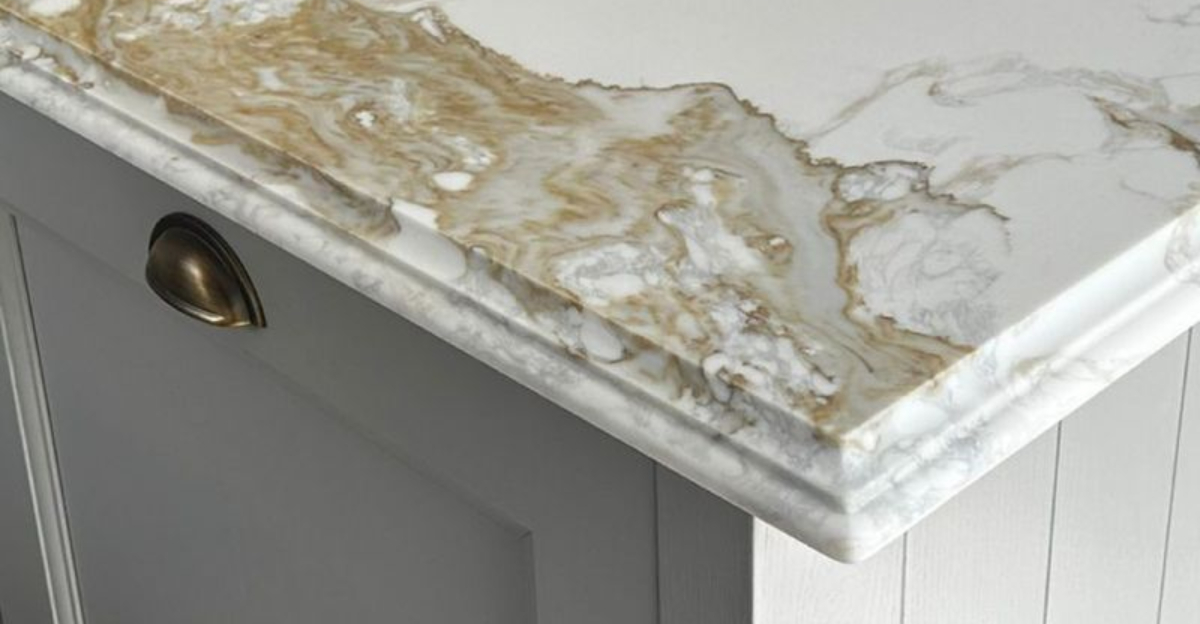Kitchen countertops aren’t just functional surfaces—they’re statement pieces that can transform your entire cooking space. While many homeowners focus on material selection, professional designers know that edge profiles are the secret weapon for creating truly custom looks.
The right edge detail can complement your kitchen’s style, enhance safety, and add that perfect finishing touch that makes guests wonder why your countertops look so much more expensive than they actually were.
1. Eased Edge
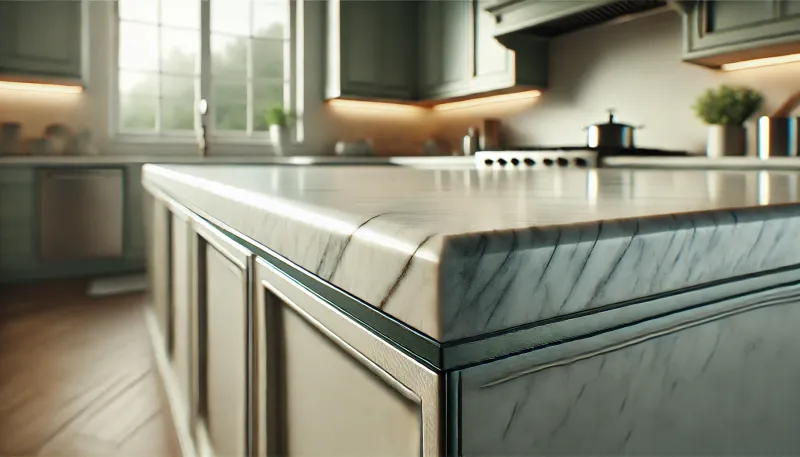
Simplicity reigns supreme with this subtle softening of what would otherwise be a sharp 90-degree corner. By gently rounding the top edge, you’ll avoid those painful hip bumps while maintaining a clean, contemporary aesthetic.
Many modern kitchens showcase this understated profile because it pairs beautifully with minimalist design schemes without stealing attention from statement backsplashes or hardware.
2. Beveled Edge
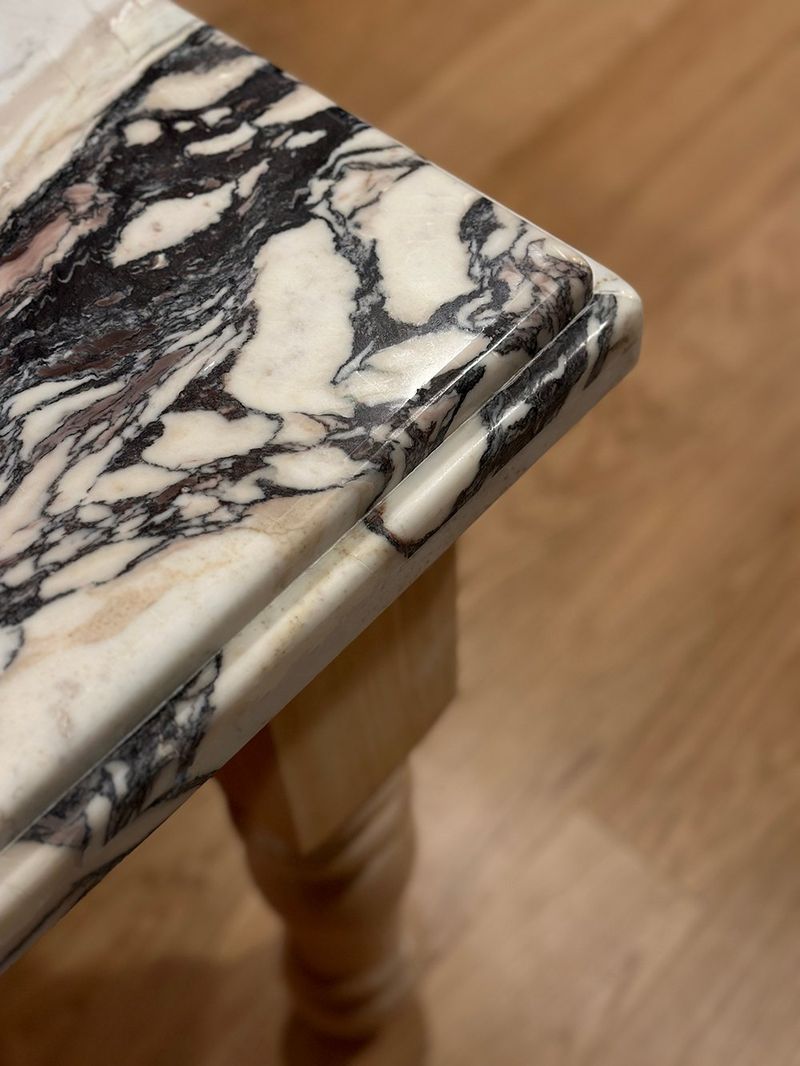
Angled with precision, a beveled edge creates an eye-catching slant that catches light beautifully throughout the day. Depending on your preference, the bevel can be subtle at just 1/4 inch or dramatically angled for bolder impact.
Light plays across this edge detail in fascinating ways, creating shadow lines that add dimension to even monochromatic countertops. Perfect for kitchens that blend traditional elements with contemporary sensibilities.
3. Bullnose Edge
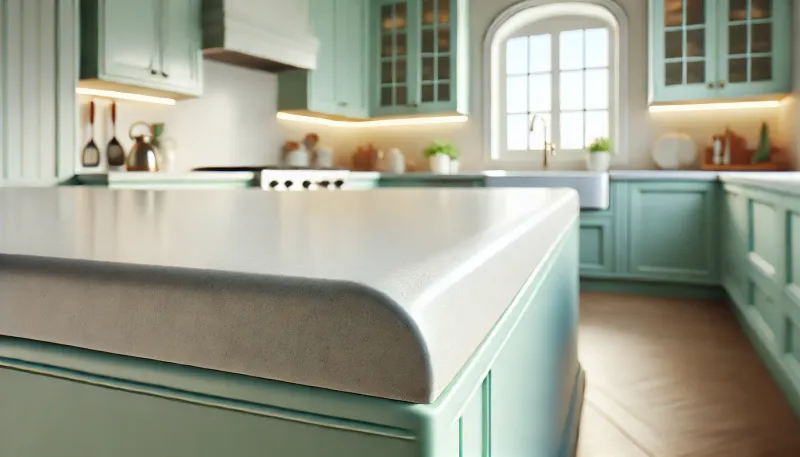
Smooth and completely rounded from top to bottom, the bullnose edge feels wonderfully organic under your hands. Kids and adults alike appreciate this fully curved profile that eliminates any possibility of sharp corners.
Beloved in family homes for its safety features, this classic profile also brings a certain softness to kitchens with lots of hard angles and straight lines. The gentle curve catches light in a continuous sweep rather than defined lines.
4. Half Bullnose Edge
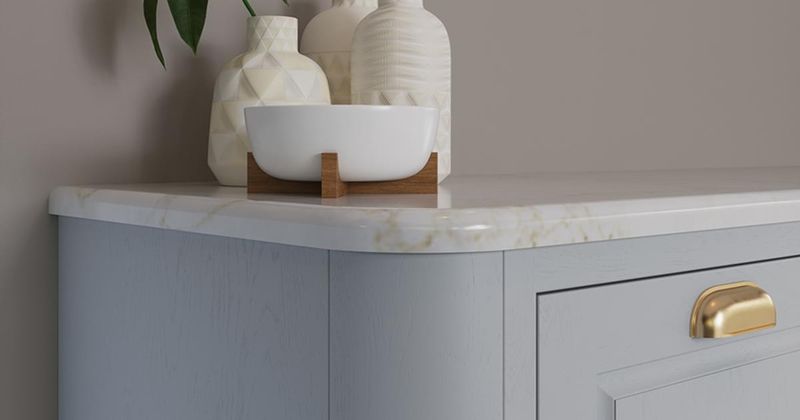
Striking the perfect balance between contemporary and classic, the half bullnose rounds just the top portion while keeping the bottom edge squared off. You’ll get the safety benefits of a rounded top without the overly traditional look of a full bullnose.
This profile works beautifully in transitional kitchens where modern and traditional elements dance together. Plenty of designers consider it the “goldilocks” of edge profiles—not too sharp, not too rounded.
5. Ogee Edge
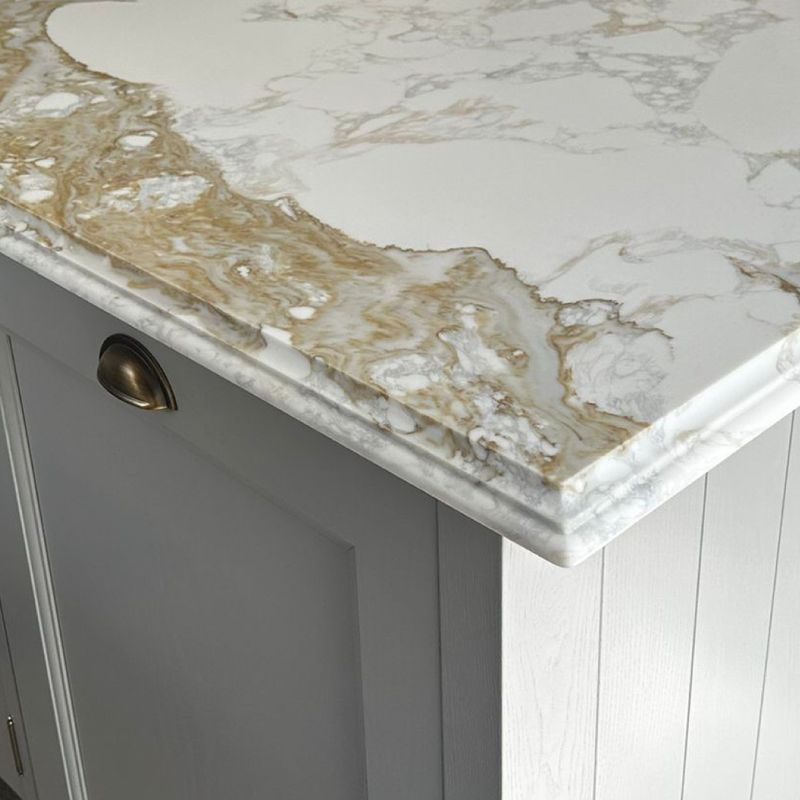
Looking for instant elegance? The ogee’s distinctive S-curve brings timeless sophistication to any countertop material. With its concave arch flowing into a convex curve, this profile adds remarkable depth and shadow play.
Particularly stunning on islands or peninsula countertops where the edge is highly visible, the ogee transforms ordinary stone into a work of art. No wonder it’s been a favorite in upscale homes for centuries!
6. Double Ogee Edge
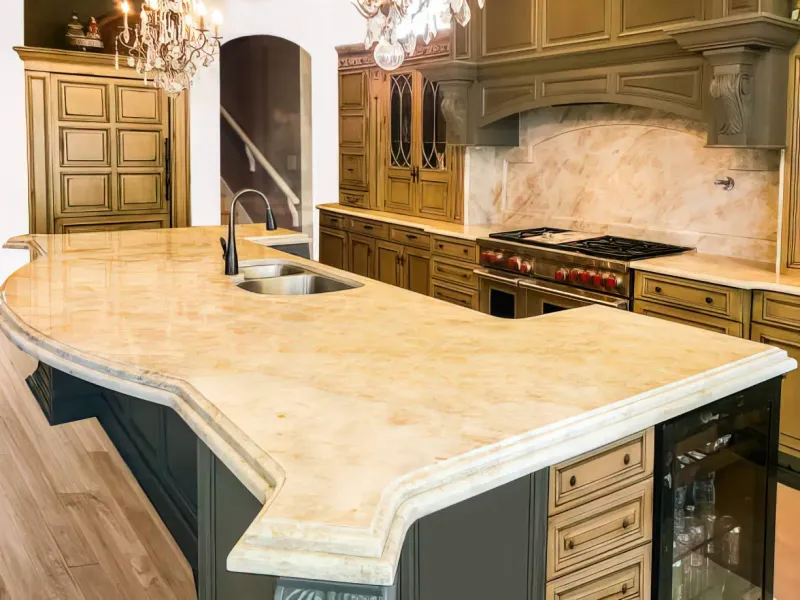
When one S-curve simply isn’t enough, the double ogee steps in with dramatic flair. Featuring two stacked ogee profiles, this elaborate edge detail creates complex shadows and a substantial profile that commands attention.
Reserved for grand kitchen designs with ample space, this profile adds approximately 2 inches of vertical detail to your countertop edge. Luxury personified, it pairs exceptionally well with ornate cabinetry and traditional kitchen designs.
7. Waterfall Edge
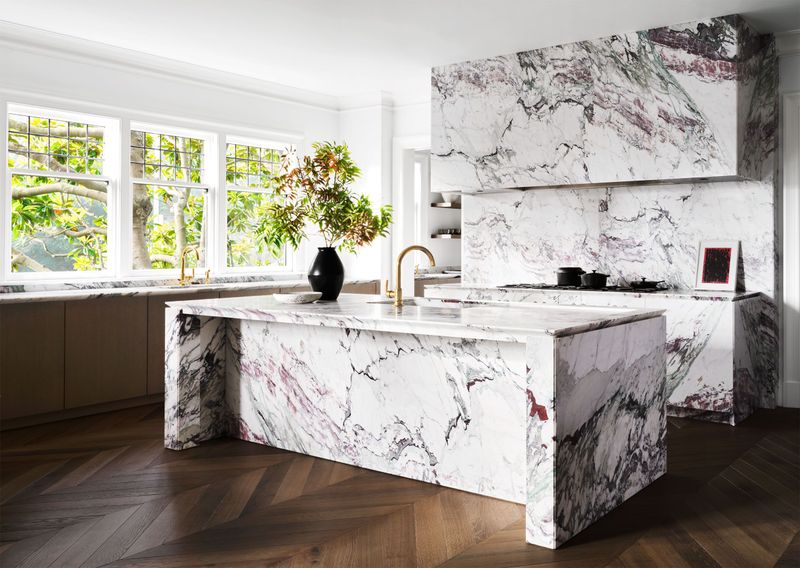
Dramatically modern, the waterfall edge doesn’t stop at the countertop’s horizontal plane—it cascades vertically to the floor on one or more sides. Rather than an edge profile in the traditional sense, it’s an architectural statement that creates visual continuity.
Island installations benefit most from this contemporary treatment, especially when using dramatic stone with beautiful veining. The vertical surface becomes a stunning focal point that showcases the material’s natural patterns.
8. Mitered Edge
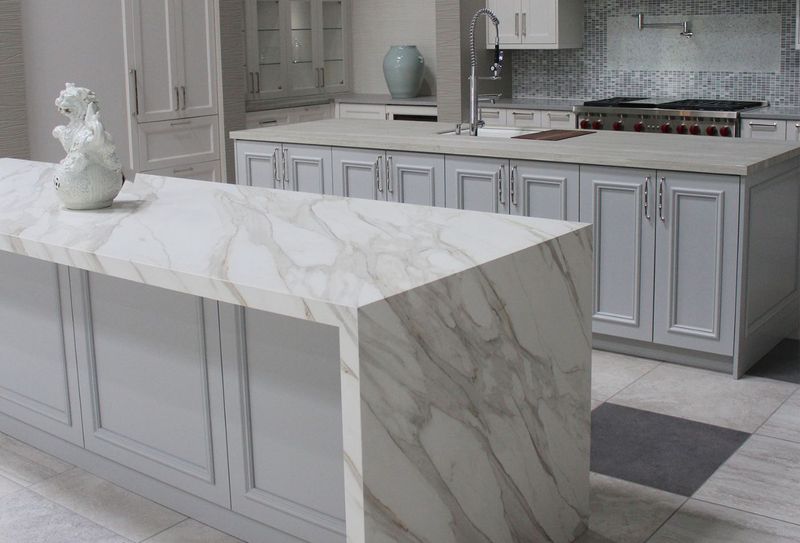
Creating the illusion of incredible thickness without the weight or cost of solid slabs, the mitered edge joins two pieces at a perfect 45-degree angle. Skilled fabricators make this seam virtually invisible, resulting in a substantial-looking edge that can appear to be 2-3 inches thick.
Frequently spotted in high-end kitchens, this technique allows for dramatic overhangs and the appearance of massive stone slabs. The clean lines make it particularly popular in contemporary and minimalist kitchens.
9. Dupont Edge
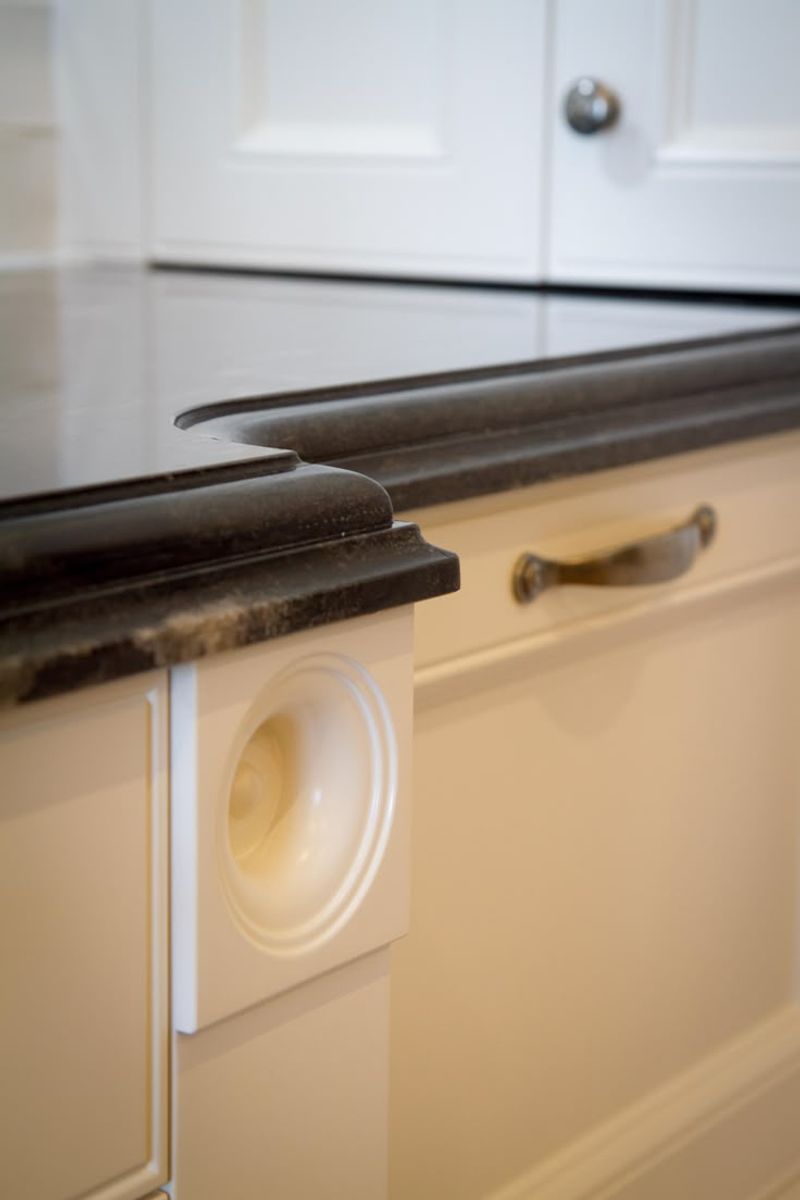
Gracefully combining a half-bullnose top with a curved undercut beneath, the Dupont edge creates a floating, lightweight appearance despite the stone’s actual heft. Your eye perceives the countertop as thinner than it really is—a clever visual trick.
Morning light casts beautiful shadows beneath this profile, highlighting its sophisticated curves. Often chosen for transitional kitchens, it bridges the gap between ornate traditional profiles and stark modern edges.
10. Cove Edge
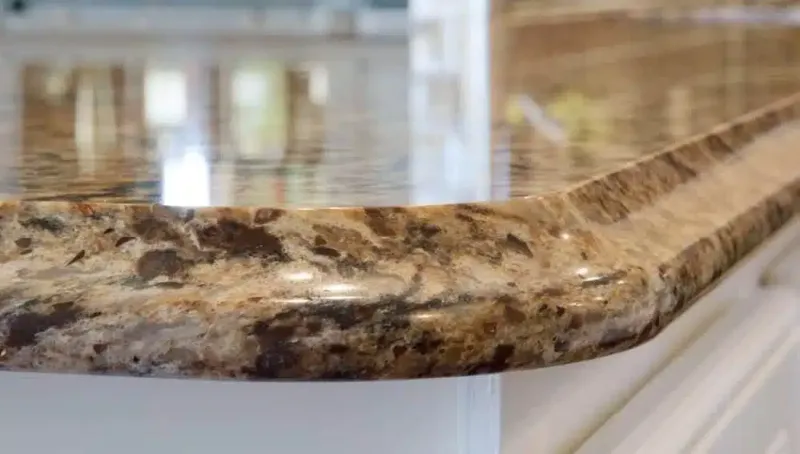
Imagine a gentle concave curve carved into the underside of your countertop—that’s the distinctive feature of a cove edge. While the top remains flat with a slight round-over, the underside curves inward before meeting the cabinet face.
Fingers naturally nestle into this comfortable profile when leaning against the counter. Beyond ergonomics, the cove creates beautiful shadow lines that add subtle dimension without the formality of more ornate edges.
11. Triple Pencil Edge
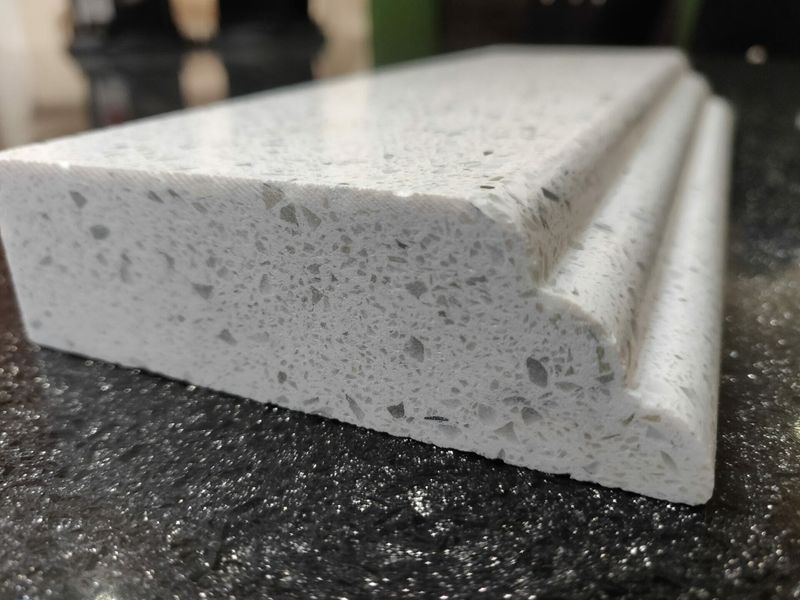
For those who appreciate fine detailing, the triple pencil edge features three small, parallel rounded edges stacked vertically. Each delicate curve measures approximately the width of a pencil—hence the name.
Surprisingly versatile, this refined profile works in both traditional and contemporary settings. The small scale of each curve creates subtle shadow lines that add visual interest without overwhelming the overall kitchen design.
12. Chiseled Edge
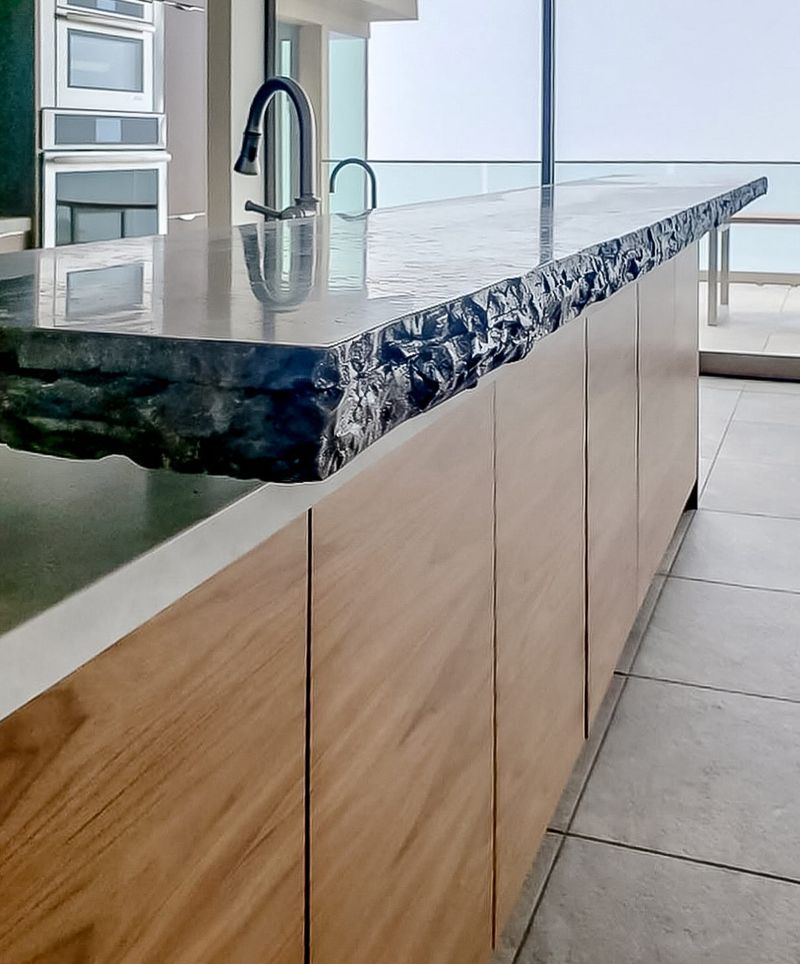
Embracing beautiful imperfection, the chiseled edge celebrates the raw, natural character of stone with its deliberately rough-hewn appearance. Each edge is unique, with skilled fabricators hand-working the stone to create an organic, textured finish.
Rustic kitchens and mountain retreats often showcase this earthy profile. When paired with polished top surfaces, the contrast between smooth and rough creates a compelling textural juxtaposition that draws both eyes and fingertips.
13. French Cove Edge
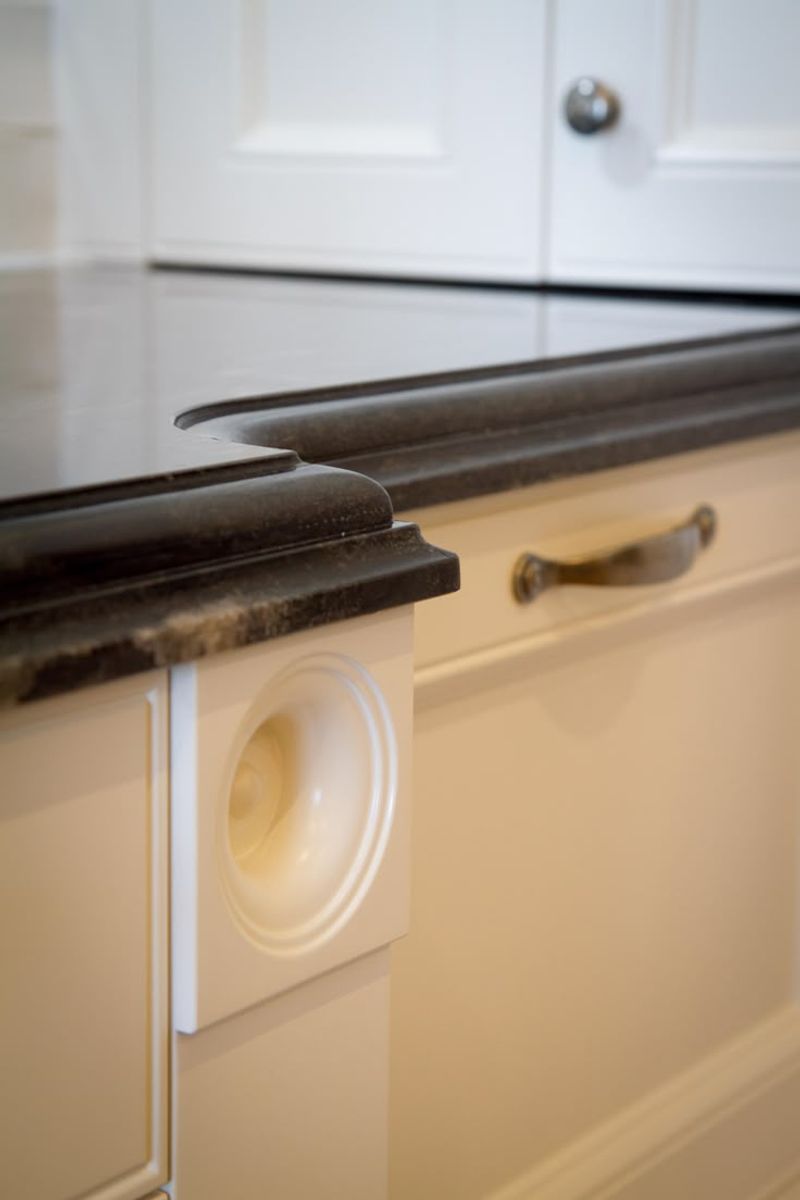
Merging classical elegance with practical design, the French Cove combines a convex curve at the top that flows into a concave cove underneath. This sophisticated S-curve creates rich shadow play without the full drama of an ogee.
Many designers choose this edge for butler’s pantries and formal kitchen spaces where refined details matter but shouldn’t overwhelm.
14. Straight Edge (Squared)
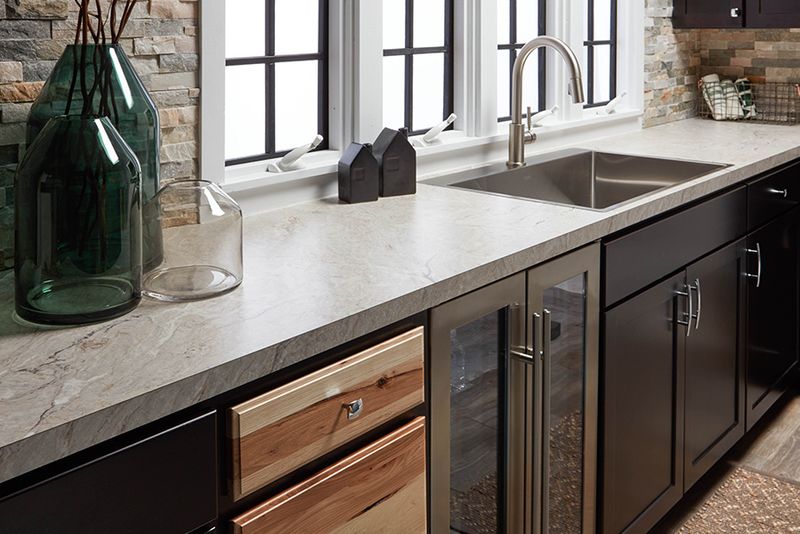
Clean, crisp, and unapologetically modern, the straight edge maintains perfect 90-degree angles at both top and bottom. Nothing distracts from the beauty of the material itself with this minimalist approach to edge detailing.
Architects and designers favor this profile for contemporary kitchens where geometric precision is celebrated. While visually striking, most fabricators slightly ease the very top edge to prevent chipping and provide minimal finger comfort.
15. Radius Edge
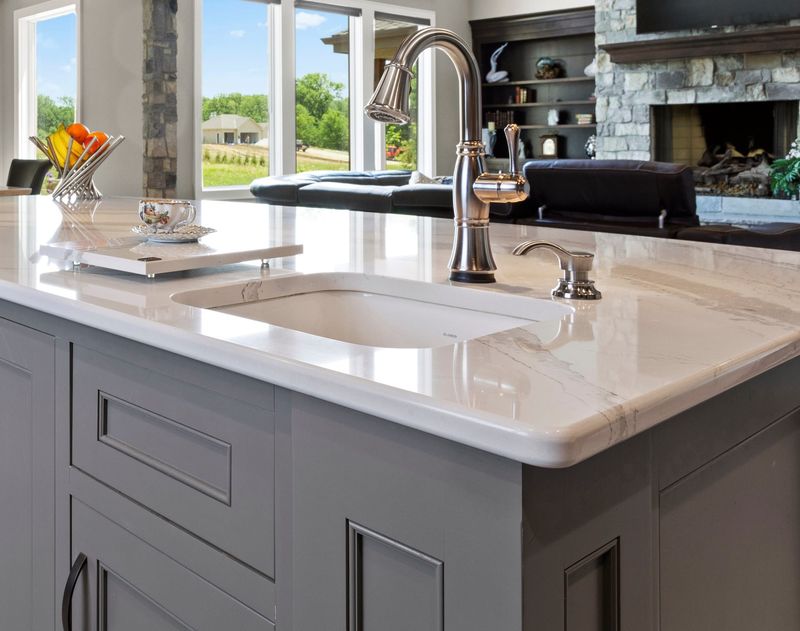
Sweeping into a quarter-circle, the radius edge softens the countertop’s profile with a gentle curve that extends from top to bottom. Unlike the bullnose, it maintains more of its thickness before curving inward.
Your hand naturally follows this smooth profile when wiping crumbs. Lots of people choose this edge for its perfect balance of contemporary lines and ergonomic comfort, especially in busy family kitchens.
16. Laminated Edge
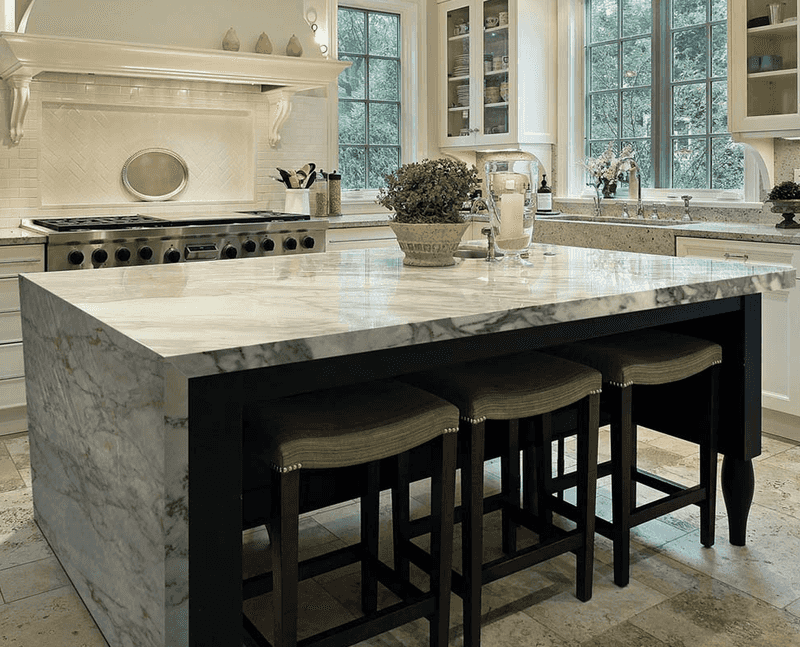
Built-up for dramatic effect, the laminated edge stacks multiple layers of stone to create an extra-thick profile—often 2-3 inches or more. Skilled fabricators join these layers with nearly invisible seams for a substantial, luxurious appearance.
Islands showcase this treatment particularly well, as the thicker edge creates a furniture-like quality. When used throughout the kitchen, laminated edges signal premium design and become a defining feature of the space.
17. Knife Edge
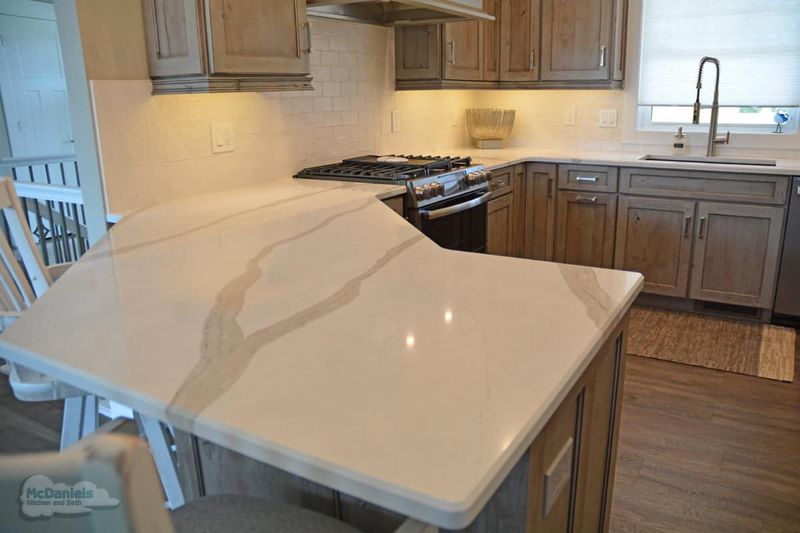
Sleek and dramatically tapered, the knife edge slopes from full thickness at the countertop surface to a remarkably thin edge at the bottom. Precision engineering creates this angled profile that appears to defy gravity and material limitations.
Architectural and distinctly modern, this profile works best in minimalist kitchens with clean lines throughout. The visual lightness it creates can make even substantial stone countertops appear to float above cabinetry.

